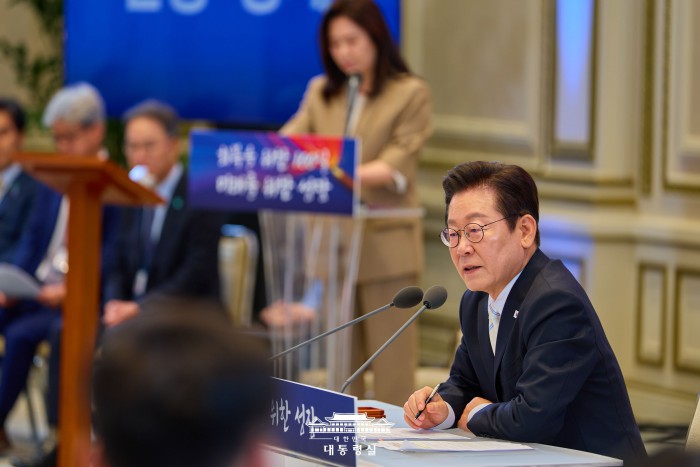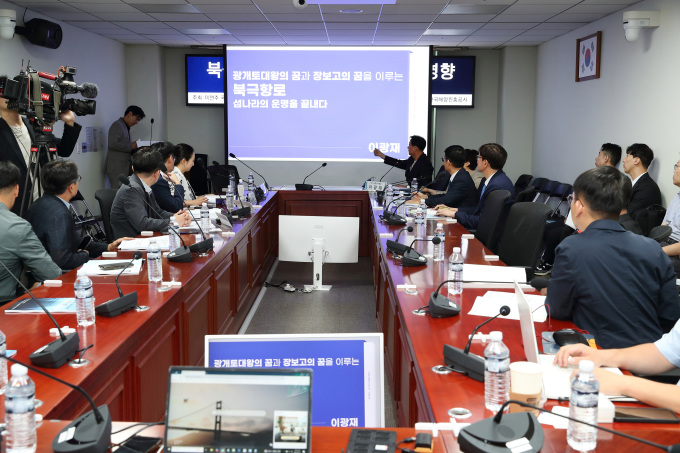
Korea’s Trade Minister Yeo Han-koo departed for Washington, D.C. on September 15. Starting on the 16th, U.S. tariffs on Japanese automobiles will be reduced from 27.5 percent to 15 percent. With the Korea-U.S. tariff agreement at risk of collapse due to sharp differences over how Korea’s investments in the U.S. should be structured, attention is focused on whether Yeo, a veteran trade negotiator, can find a breakthrough.
Speaking to reporters at Incheon International Airport’s Terminal 2 that morning, Yeo said, “We are doing our utmost to produce a reasonable agreement that serves the national interest.”
It is unusual for the trade minister to visit the U.S. immediately after Industry Minister Kim Jung-kwan returned from a trip there. Domestically, the chief negotiator holds a vice minister-level post, but is treated as ministerial level abroad. While the move signals Korea’s strong determination to reach an agreement, it is also seen as reflecting the lack of progress in the follow-up tariff talks.
Minister Kim returned to Seoul on the morning of the 14th after meeting U.S. Commerce Secretary Howard Lutnick in New York on the 12th, but reportedly failed to narrow differences over investment modalities.
Under the tariff agreement reached on July 30, the U.S. agreed to lower its planned reciprocal tariffs on Korea from 25 percent to 15 percent, while Korea pledged to make US$350 billion (about 486 trillion won) in investments in the U.S.
Korea has planned to provide only about 5 percent of that package in the form of equity and other direct investments, with the bulk consisting of indirect support such as guarantees that do not require the physical transfer of funds. Washington, however, is said to be pressing Seoul to follow Japan’s example and provide most of the $350 billion as direct investments, tantamount to a “blank check.”
Domestically, public calls for breaking off the tariff talks have been growing, especially after President Lee Jae-myung emphasized “national interest first,” “reasonableness,” and “fairness” as guiding principles in his press conference on September 11. Many argue that “it would be better to accept the 25 percent reciprocal tariffs and product-specific duties instead.”
Yeo is expected to focus on narrowing the gap with U.S. Trade Representative Jamieson Greer, his counterpart in the U.S. administration, while also conveying Korean public sentiment.
A trade industry source said, “Given the diverse voices within the U.S. administration, if Secretary Lutnick proves unyielding, it may be necessary to try alternative channels.”
Yeo is also expected to meet key figures outside the administration who can convey Korea’s position directly to President Donald Trump. After stepping down as chief negotiator in May 2022 with the launch of the Yoon Suk-yeol administration, Yeo spent two years from June 2023 as a senior fellow at the Peterson Institute for International Economics in Washington.
Before heading into the departure hall, Yeo said, “I see this as a long and arduous process to reach a balanced and fair outcome. We are making every effort to achieve a result that best serves the national interest.”
※This article was translated by an AI tool and edited by a professional translator.


![투자 줄어들까 조바심? 트럼프 “외국기업 투자 위축 원치 않아”…“美, 금융위기 아니면 안해주는데” 연준 상대해야 할 韓銀 ‘곤혹’ [AI 프리즘*글로벌 투자자 뉴스]](https://newsimg.sedaily.com/2025/09/16/2GXXAJRF4I_1.jpg)

![미중, 또 반도체 기싸움, 정상회담도 불투명…한미 관세협상, 대미투자 세부조건 놓고 장기전 돌입할 듯 [AI 프리즘*글로벌 투자자 뉴스]](https://newsimg.sedaily.com/2025/09/15/2GXWTBA4PA_1.jpg)


![[뉴스핌 뉴스레터 Today ANDA] 9월16일](https://img.newspim.com/news/2025/09/10/2509101546548870.jpg)
